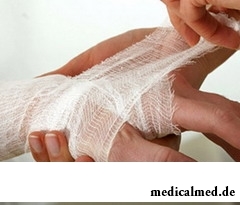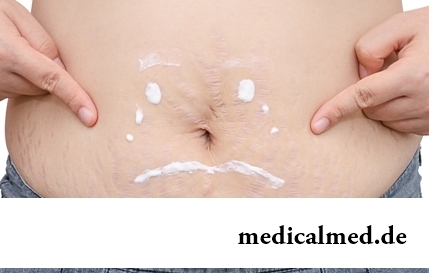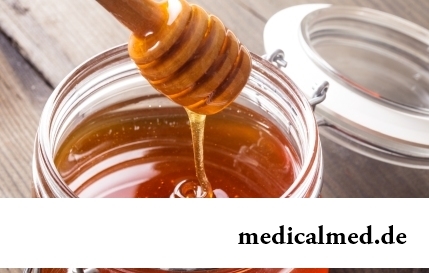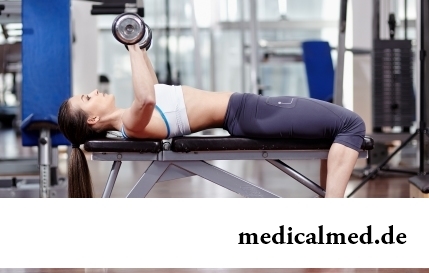





First aid at burns
 Burn is called damage of body tissues, as a result of influence of high temperature. Except thermal, burns happen also electric, chemical and radiation.
Burn is called damage of body tissues, as a result of influence of high temperature. Except thermal, burns happen also electric, chemical and radiation.
Thermal, or thermal burns concern to the most widespread, especially in a younger age group – at small children the vast majority of burns happens as a result of a scalding by boiled water.
There are several classifications of burns, in our country A. A. Vishnevsky's classification dividing damages into degrees depending on depth of damage of fabrics is accepted. Knowledge of classification allows to orient quickly in a situation and not to be mistaken at first-aid treatment. So, according to Vishnevsky distinguish 4 degrees of burns:
- Erythema stage, or reddenings;
- Stage of bubbles;
- Skin necrosis stage;
- The stage of a necrosis of skin and subjects of fabrics (a fatty tissue, muscles, sinews, and sometimes and bones) which is also called by a carbonization stage.
The first two stages carry to easy degree, the third and fourth – to burns of heavy degree, or deep burns. This division is conditional as does not consider the area of defeat and special anatomic zones (the face, eyes, inguinal area, joints concern to them), nevertheless, idea of weight of defeat and of what actions of first aid should be undertaken, it gives.
First aid at burns of easy degree
Burns of easy degree do not demand hospitalization, as a rule, of rather house treatment, however only if first aid was given correctly. So, at such defeats, after the termination of influence of the injuring factor, it is necessary:
- To make room of a burn from clothes if it is. At the same time it is inadmissible to pull together clothes since it is possible to injure even more skin (if necessary fabric should be cut);
- To place the burned space for flowing cold water for 10-20 minutes or to put a cold compress. To inadmissibly use ice since the frostbite of fabrics can be added to a burn for cooling of skin;
- To process the struck place an antiseptic agent. It is possible to use antiburn means, for example Panthenol, it is allowed to process the burned surface alcohol. It is impossible to apply iodine, solution of permanganate potassium, and also oil, fat ointments and creams – what interferes with air exchange;
- To apply not pressure sterile pressure bandage the damaged site of skin, at the same time it is not necessary to use vatu since it is quite difficult to remove its fibers from a wound surface;
- At a megalgia to give to the victim anesthetic. It is possible to use Paracetamol, Aspirin (it it is undesirable to children to give), Nimesil, the Nurofen, etc.
As a rule, these measures of first aid at burns of easy degree quite enough. Similar damages within 10-14 days begin to live, the main objective in their treatment – not to allow additional traumatizing the affected site and entering of an infection.
First aid at burns of heavy degree
In case of thermal defeats of III and IV degrees, and also the burns of the II degree affecting extensive sites of skin or anatomically significant areas, help is given in a hospital therefore the victim needs to call the ambulance as soon as possible. Waiting for arrival of the doctor and after elimination of a disturbing factor, a measure for first-aid treatment at burns of heavy degree are as follows:
- It is necessary to make sure that there is no site left of the smoldering clothes. It is not necessary to delete clothes scraps from the injured skin;
- To close the burned surface whenever possible sterile, or at least pure leaky adjacent bandage;
- At deep damages it is impossible to immerse the injured body part under water, it is also not necessary to use ice. Instead it is necessary to humidify with cold water a bandage;
- To give to drink the victim warm tea or the warm added some salt alkaline water (for its preparation in 1 l of water to stir 1-2 g of baking soda and 3 g of salt);
- Injured to place so that the burned part of a body was higher than the level of heart.
To use medicines of local appointment, even such as Panthenol, in this case does not follow, processing of wounds will be made in hospital.
First aid at electric burns
First aid at an electric burn consists in isolation of the victim of influence of the damaging agent then it is necessary to check existence of pulse and breath. If they are absent, it is necessary to start resuscitation actions – the closed cardiac massage, breath of companies - in - a mouth or a mouth - in - a nose. As soon as possible it is necessary to call the ambulance, continuing resuscitation actions before stabilization of pulse and breath or before arrival of the doctor.
The superficial injuries of skin received at an electric burn are processed as well as at a burn thermal.
First aid at corrosive burns
The corrosive burn is caused by impact on skin or a mucous membrane of acids, alkalis and other caustic substances. In spite of the fact that the damaging agents can be different, first-aid treatment at burns of this type begins equally: the damaged site needs to be placed under flowing water for 10-20 minutes. It is fair for all corrosive burns, except for burns not extinguished lime and sulphuric acid.
After washing by water, the place of a burn is processed by weak solution of alkali, for example soda (1 teaspoon on a glass of water) or soap solution (soap it is desirable to take economic, without additives). Burns sulphuric acid should be processed alkalescent solution, without preliminary washing by water.
Alkaline burns after washing process subacidic solution – solution of vinegar or citric acid will approach.
The burns caused by not extinguished lime process oil or fat at once – and it is the only case when at first-aid treatment at burns fat ointments are used.
It must be kept in mind that burns alkalis are more dangerous as at them the clear boundary between the damaged site and healthy fabric is not formed. It is a so-called kollikvatsionny necrosis which tends to distribution even after completion of influence of the damaging agent.
During sneezing our organism completely stops working. Even heart stops.

The brain of the person is studied not one hundred years, but the quantity of the riddles connected with this body increases rather, than reducing...
Section: Articles about health
Good appetite was always considered as a sign of good health. The correct operation of the mechanism which is responsible for the need for nutrients and receiving pleasure from process of its satisfaction demonstrates that the organism functions without special from...
Section: Articles about health
Hemorrhoids – extremely widespread disease. Periodically arising inflammations and bleeding of hemorrhoidal nodes cause serious discomfort to nearly fifteen percent of adults. Meanwhile, having a clear idea of the reasons of an exacerbation of an illness and following rules of precaution, it is possible to reduce substantially sharpness of unpleasant feelings and to reduce progressing of a disease....
Section: Articles about health
Household skills which to us so diligently imparted in the childhood it appears, not always bring only benefit. According to result...
Section: Articles about health
Run - one of the most available and effective ways to revitalize the organism. Knowing about its extraordinary advantage, each of us at least once tried to make jogs, but only the few made these occupations regular. In spite of the fact that in jogging (easy an ozdor...
Section: Articles about health
Striya (extension) are the defects of skin having an appearance of direct or wavy strips from 1 to 10 cm long and 1-5 mm wide. In most cases at women of a striya are located on a stomach, hips, a breast or buttocks. At athletes they can appear on shoulders and the internal surface of forearms. At initial stages of development of an extension have red or lilac color, but over time their coloring turns pale, and strips become whitish, getting a nacreous shade....
Section: Articles about health
The problem of diagnosis was and remains to one of the most important in medicine. From that, the reason недо will be how precisely defined...
Section: Articles about health
Doctors claim that the people not so familiar with a dorsodynia occur among adult Russians very seldom. At the same time the vast majority of the patients who are periodically testing this indisposition do not hurry to ask for medical care at all. With one St...
Section: Articles about health
The endocrine system carries out extremely important role in a human body, practically all processes of life activity are regulated by it. Closed glands (hemadens) produce special biologically active agents – hormones which then get to a blood channel and are transferred to bodies addressees, or as they are called still, to target organs. Frustration of this mechanism are fraught with development of serious chronic pathologies....
Section: Articles about health
Maternal milk is the best food for the newborn. It is the unique natural product containing optimum set...
Section: Articles about health
The name of this disease precisely reflects the problem reason: it consists in the bra fastener pressure upon a certain zone of a back. At the same time one of vertebrae of chest department of a backbone is as if blocked and loses mobility, and falling on it is nude...
Section: Articles about health
People know that thermal sources have salutary force long ago. Treatment by natural waters is one of the most ancient methods of disposal of the most different diseases. Bathtubs, souls, wrappings and inhalations, in combination with water reception inside help to improve a condition of the patients suffering from disturbances of work of a musculoskeletal system, bodies of digestive tract, cardiovascular, nervous, respiratory and secretory system, skin and endocrine п...
Section: Articles about health
All like to sing. Small children with pleasure are engaged in a vocal, not especially thinking of hit in a melody. Adults most often...
Section: Articles about health
Contrary to popular belief, the multiple sclerosis (MS) is not connected neither with sclerous changes of walls of vessels, nor with age forgetfulness and problems with concentration of attention. This disease has the autoimmune nature. Pathological process of a vyrazh...
Section: Articles about health
Frosty air, fresh wind and easy snowball at most of Russians are associated with cheerfulness, health and cheerful entertainments on which our winter is so generous. But, unfortunately, cold season sometimes brings also troubles with health. It is not about seasonal colds and frostbites, and about those chronic illnesses which symptoms are shown preferential in the winter....
Section: Articles about health
Popular joke that there are no healthy people, and is nedoobsledovanny, most of us considers an honest truth, and put that...
Section: Articles about health
The winter swimming in open reservoirs called in our country by "winter swimming" – officially recognized sport and one of the most extreme ways of a hardening of an organism. This occupation has an old story and adherents in many countries. Are annually carried out...
Section: Articles about health
For many women the word "fat" sounds as a sentence. In aspiration to an ideal figure they try to exclude, first of all, from the menu all dishes containing fats without having at the same time a clear idea of a role of these substances in exchange processes, and of effects for health with which food restrictions of this sort are fraught. For what the human body needs fats and as their deficit in a diet is shown, we also will try to find out....
Section: Articles about health
The naturopathy sometimes moves as the new direction of medicine, something like fashionable hobby, and there is nothing farther from the truth....
Section: Articles about health
The trophic ulcer is not an independent disease. This heavy complication arising owing to a thermal injury (a burn or a frostbite), chronic pathologies of arteries or veins of the lower extremities, a diabetes mellitus, and also some defeats of a soyeda...
Section: Articles about health
Water with a lemon - idle time in preparation drink which supporters of a healthy lifestyle already managed to appreciate. Used in a warm look and on an empty stomach, it is one of the most useful prophylactics allowing to prevent tens of diseases and just to raise an organism tone. Especially effectively to use warm water with lemon juice after a serious illness, during a season of the colds, and also to children, old men and pregnant women which do not have contraindications...
Section: Articles about health
The thought that the mass of their body is too big at least once in life visits from 80 to 95% of women. Many...
Section: Articles about health
Women quite often suffer from complexes concerning the sizes of the bust. Strangely enough, not too modest, and excessively curvy shapes become the reason of sincere discomfort sometimes. Except psychological problems, a big bust sometimes with...
Section: Articles about health
Osteoporosis this general disease which main sign is decrease in density of a bone tissue. On distribution width it takes the fourth place among noninfectious diseases. The illness develops at mature age more often: in our country about a third of women and a quarter of men suffers from it 50 years are more senior....
Section: Articles about health
It seems, quite recently you brought the baby from maternity hospital, but time flew by, and here it is already going to join the first...
Section: Articles about health
EKO, or extracorporal fertilization - a method of treatment of infertility which became the reason of a set of broken-down copies in due time accused the people working on its creation neither more nor less of rivalry good luck. Already very few people deny the rights...
Section: Articles about health
One of the major chemical processes happening in a human body are oxidation reactions. They go with participation of fats and carbohydrates which we receive from food, and the oxygen getting to us from air. A main goal of such reactions is obtaining the energy necessary for life activity. Unfortunately, as a result of these processes dangerous by-products – so-called free radicals are allocated. To minimize harm which they can cause to the person neo...
Section: Articles about health
